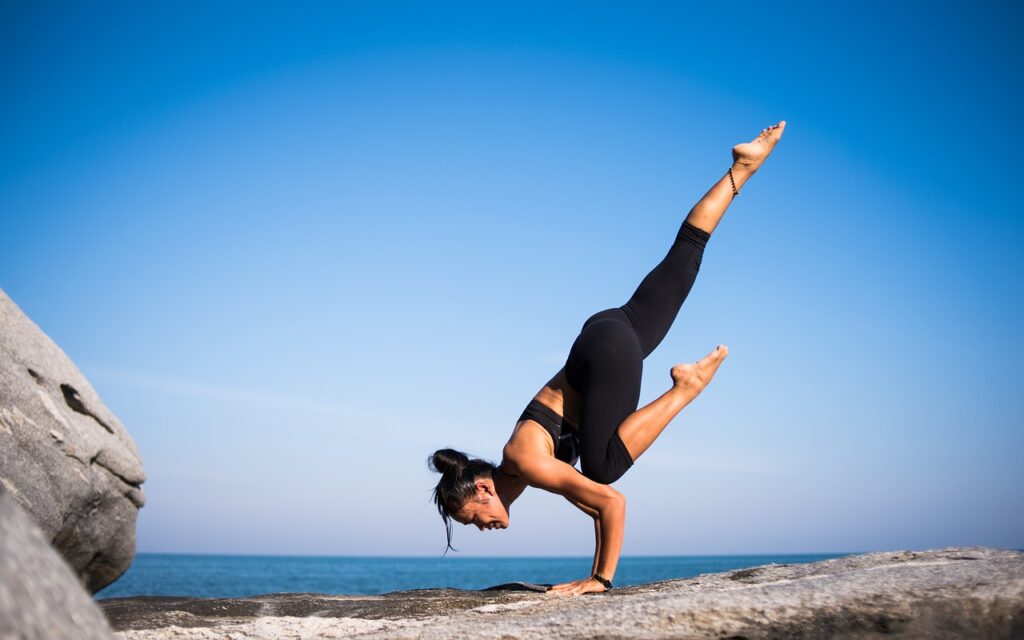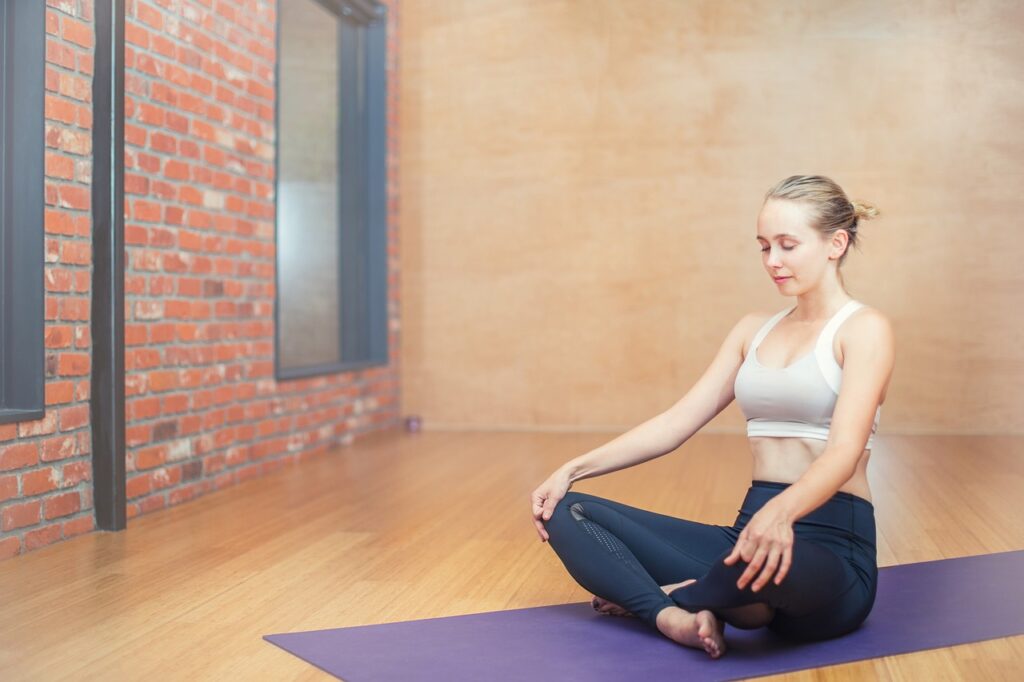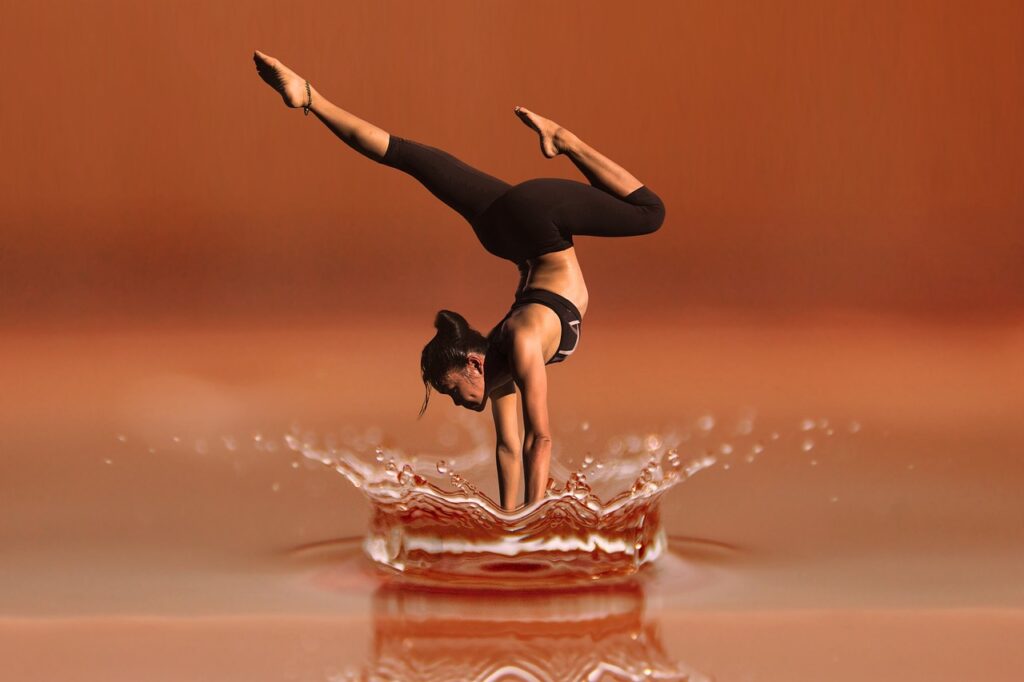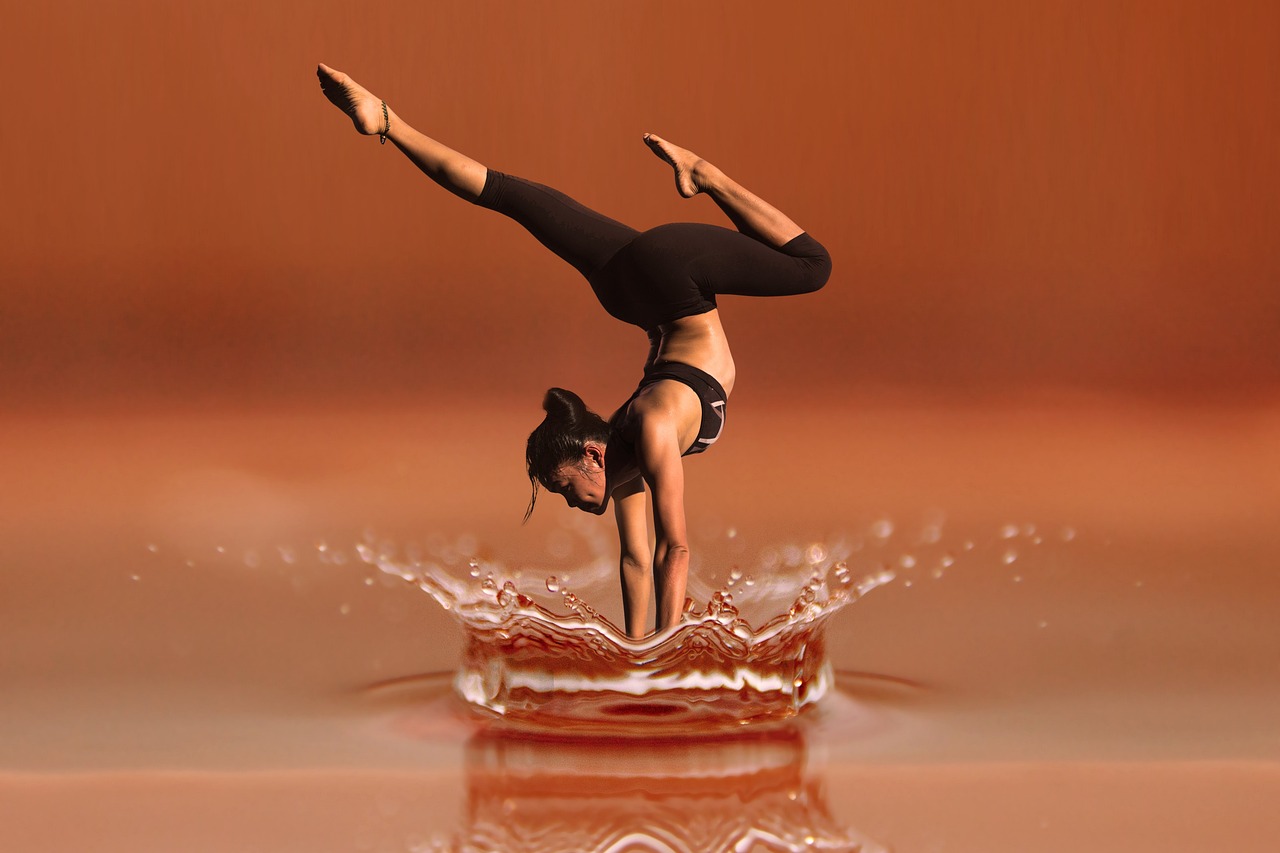In your journey of practicing yoga, one of the challenges you may face is maintaining balance in standing yoga poses. Whether it’s the Tree pose, Warrior II, or the classic Mountain pose, finding stability can sometimes feel like an uphill battle. However, fear not! There are effective ways to improve your balance and find harmony in these poses. By focusing on your alignment, engaging your core muscles, and practicing regularly, you’ll soon find yourself feeling more grounded and steady in your standing yoga poses. So, let’s explore some helpful tips and techniques that will guide you towards finding your balance on the yoga mat.

Understanding the Importance of Balance in Standing Yoga Poses
The role of balance in yoga
Balance plays a vital role in standing yoga poses as it not only challenges the physical body but also requires mental focus and stability. In yoga, balance is not just about staying upright; it’s about finding harmony and equilibrium within yourself. When you are able to maintain balance in your standing poses, you cultivate a sense of grounding and strength that extends beyond the mat and into your everyday life.
How balance affects the body and mind
Maintaining balance in standing yoga poses has a profound impact on both the body and mind. Physically, it helps improve posture and stability, strengthens the muscles in the feet, ankles, and legs, and enhances flexibility and coordination. Balance also helps to fine-tune proprioception, which is the body’s ability to sense and control its position in space. Mentally, practicing balance in yoga poses fosters focus, concentration, and mindfulness, allowing you to be fully present in the moment and let go of any distractions. It also promotes a sense of calmness and grounding, helping to reduce stress and anxiety in your daily life.
Developing a Strong Foundation
Maintaining proper alignment
To develop a strong foundation in standing yoga poses, it is crucial to maintain proper alignment throughout your practice. This involves aligning your ankles, knees, and hips in a straight line with the spine, engaging the core muscles to support the lower back, and spreading the weight evenly between both feet. By aligning your body correctly, you create a stable base that allows for better balance and reduces the risk of injury.
Strengthening the feet and ankles
The feet and ankles are the foundation of balance in standing yoga poses, so it is essential to strengthen and stabilize them. Simple exercises such as toe lifts, calf raises, and balancing on one leg can help improve the strength and stability of the feet and ankles. Additionally, practicing yoga poses that focus on these areas, such as Tadasana (Mountain Pose) and Vrksasana (Tree Pose), can help build strength and stability in the lower limbs.
Building a solid core
A strong core is essential for maintaining balance in standing yoga poses. The core muscles, including the abdominal muscles and the muscles along the spine, provide stability and support to the entire body. Incorporating exercises that target the core, such as Plank Pose and Boat Pose, into your yoga practice can help strengthen these muscles and improve your overall balance. Building a solid core will not only enhance your stability but also improve your posture and prevent back pain.
Improving Proprioception and Body Awareness
Understanding proprioception
Proprioception is the body’s ability to sense and control its position in space. When it comes to balance in standing yoga poses, proprioception is crucial. By developing a better sense of proprioception, you can fine-tune your body’s alignment and movements, leading to greater stability and balance. Proprioception can be enhanced through various balance exercises that challenge your body’s spatial awareness, such as standing on one leg with your eyes closed or practicing yoga poses on an unstable surface.
Incorporating balance exercises into your yoga practice
To improve balance, it is essential to incorporate specific balance exercises into your yoga practice. These exercises can include poses such as Ardha Chandrasana (Half Moon Pose) and Natarajasana (Dancer’s Pose), which require you to engage and strengthen the stabilizing muscles throughout the body. Additionally, utilizing yoga props like blocks or blankets can help create further instability, forcing you to rely on your proprioceptive skills to find balance and stability.
Cultivating body awareness through mindfulness
Mindfulness is a powerful tool in improving balance in standing yoga poses. By cultivating body awareness and tuning in to the sensations and movements of your body, you can better understand how to adjust and find balance. Mindfulness involves focusing on your breath, observing the alignment of your body, and staying present without judgment. By practicing mindfulness in balancing poses, you can develop a deeper connection between your mind and body, enhancing your overall balance and stability.
Breathing and Focus Techniques
Connecting breath and movement
One of the fundamental principles in yoga is the connection between breath and movement. When practicing standing yoga poses, integrating a conscious breath allows you to regulate your energy and focus your attention. By syncing your breath with the movements, inhaling during expansion and exhaling during contraction, you create a sense of flow and ease in your practice. This synchronicity helps you stay grounded, calm, and focused, enhancing your overall balance in the poses.
Using the drishti (gaze) to enhance balance
Drishti refers to a focused gaze in yoga. By fixating your gaze on a specific point, you can improve your balance and concentration in standing yoga poses. The drishti acts as an anchor, allowing you to stay present and steady amidst any distractions or wobbling. Each pose in yoga has a designated drishti, whether it’s the tip of the nose, a specific point on the floor, or a distant object. By mastering the art of using the drishti, you can effectively enhance your balance and stability in standing poses.
Practicing mindfulness in balancing poses
Being mindful in balancing poses is essential for maintaining stability and improving balance. When you bring your attention to the present moment and remain fully present with your breath and body, you can sense any imbalances or areas of tension in your body. By consciously relaxing those areas and creating space within, you allow for smoother weight shifts and subtle adjustments, resulting in improved balance. Mindfulness helps you stay grounded and centered, allowing you to find stability both physically and mentally.

Utilizing Props and Modifications
Exploring the use of props
Props can be incredibly beneficial in improving balance in standing yoga poses. They provide support and stability, allowing you to find proper alignment and gradually work towards deeper balance. Yoga props such as blocks, straps, and blankets can be used in various ways to modify poses and make them more accessible. For example, using a block under the hand in Trikonasana (Triangle Pose) can help maintain stability and prevent strain. Props can be a valuable tool in developing balance while ensuring safety and proper alignment.
Modifying poses for better balance
Modifications are valuable in yoga as they allow practitioners of all levels to experience the benefits of each pose. When it comes to standing yoga poses, modifications can be helpful for improving balance. For example, if you find it challenging to balance in Tree Pose, you can modify by placing the foot on the calf instead of the inner thigh. This modification provides extra support and stability while still allowing you to work on your balance. Gradually, as your balance improves, you can progress to the full expression of the pose.
Using a wall or support for stability
When working on balance in standing yoga poses, utilizing a wall or any other support can be a valuable tool. Having the support of a wall provides a sense of stability, allowing you to focus on the alignment and sensations within your body without the fear of falling. By utilizing a wall, you can explore challenging poses such as Vrikshasana (Tree Pose) or Utthita Hasta Padangusthasana (Extended Hand-to-Big-Toe Pose) with more confidence before gradually progressing to practicing them in the center of the room.
Working on Strength and Flexibility
Strengthening the leg muscles
Strong leg muscles are essential for maintaining balance in standing yoga poses. Strengthening exercises such as squats, lunges, and chair pose can target the quadriceps, hamstrings, and calf muscles, contributing to enhanced stability and balance. Additionally, practicing standing yoga poses that require engagement of the leg muscles, such as Virabhadrasana II (Warrior II) and Utthita Parsvakonasana (Extended Side Angle Pose), can further strengthen these muscles while improving overall balance.
Improving flexibility in the hips and hamstrings
Flexibility in the hips and hamstrings is crucial for achieving optimal balance in standing yoga poses. Tightness in these areas can limit your range of motion and make it difficult to maintain proper alignment. Poses like Ardha Hanumanasana (Half Split) and Supta Padangusthasana (Reclining Hand-to-Big-Toe Pose) can help increase flexibility in the hips and hamstrings, enabling you to move more freely and find balance with ease.
Developing upper body strength to support balance
While the focus in standing yoga poses is often on the lower body, developing upper body strength is also essential for supporting balance. A strong upper body, including the arms, shoulders, and core, provides stability and support during standing poses. Incorporating exercises such as Chaturanga Dandasana (Four-Limbed Staff Pose) and Dolphin Plank Pose can help strengthen the arms and core, contributing to better balance and stability in standing yoga poses.

Practicing Balance-Specific Yoga Poses
Tree Pose (Vrksasana)
Tree Pose, or Vrksasana, is a classic standing yoga pose that challenges balance and stability. To practice Tree Pose, begin by standing tall with your feet firmly planted on the ground. Shift your weight onto your left foot, then lift your right foot and place the sole of your foot on the inner left thigh or calf. Find a point of focus to gaze at, engage your core, and breathe deeply. With practice, you will enhance your balance and stability in this pose, feeling grounded like a strong and steady tree.
Warrior III Pose (Virabhadrasana III)
Warrior III, or Virabhadrasana III, is an empowering standing balance pose that builds strength and focus. To practice Warrior III, start in Mountain Pose. As you exhale, shift your weight onto your right foot and extend your left leg behind you. Simultaneously, hinge forward at the hips, bringing your torso parallel to the ground, and reach your arms forward or extend them back alongside your body. Engage your core, find a steady gaze, and breathe deeply. This pose challenges balance, strengthens the legs, and cultivates a sense of inner power.
Eagle Pose (Garudasana)
Eagle Pose, or Garudasana, is a standing balance pose that requires focus, flexibility, and stability. Begin in Mountain Pose and shift your weight onto your left foot. Cross your right thigh over the left, either wrapping the right foot behind the left calf or hooking it around the front of the left shin. Extend your arms forward, then bring the left arm under the right, crossing at the elbows, or bring the palms together. Find a point of focus, engage your core, and breathe deeply. Eagle Pose improves balance, opens the shoulders, and enhances concentration.
Mindful Transitions and Smooth Weight Shifts
Transitioning between poses with grace
Transitions between standing yoga poses are an opportunity to cultivate grace and fluidity in your practice. By focusing on the breath and maintaining mindfulness, you can ensure smooth transitions from one pose to another. Start by establishing a strong foundation in one pose, then transition mindfully, maintaining body awareness and proper alignment throughout. Conscious transitions not only improve balance but also foster a sense of flow and connectedness in your practice.
Feeling the weight shift and adjusting accordingly
Feeling the weight shift is an essential aspect of improving balance in standing yoga poses. When transitioning from one pose to another, being aware of how your weight moves within your body and adjusting accordingly helps maintain stability. For example, while moving from Warrior II to Triangle Pose, shifting the weight evenly between both feet and engaging the core allows for a smooth and controlled transition. By cultivating awareness of weight distribution, you can improve your balance and avoid unnecessary strain or wobbling.
Practicing slow and controlled movements
In standing yoga poses, slow and controlled movements are key to improving balance and stability. Rushing through transitions or moving haphazardly can disrupt your equilibrium and negatively impact your balance. Instead, focus on moving deliberately and mindfully, allowing your body to adjust and find balance with each movement. By practicing slow and controlled movements, you give yourself the opportunity to connect deeply with your body and cultivate a sense of stability and confidence in your standing poses.
Maintaining a Positive Mindset
Believing in your own ability
Maintaining a positive mindset is crucial when it comes to improving balance in standing yoga poses. Believe in your own ability to find balance and trust in the journey. Each individual has their own unique strengths and challenges, and it’s important to embrace where you are in your practice without judgment. Acknowledge the progress you have made and remind yourself that with time and practice, you will continue to improve. Cultivating a positive mindset encourages perseverance, resilience, and a sense of accomplishment as you work towards greater balance.
Letting go of self-judgment
In the pursuit of improving balance, it’s essential to let go of self-judgment. Remember that balance is an ongoing process, and there will be days when you feel more steady and others when you may wobble or fall out of a pose. Instead of criticizing yourself, approach each practice with self-compassion and acceptance. Embrace the challenges as opportunities for growth and learning, focusing on the journey rather than fixating on the end result. By letting go of self-judgment, you create a supportive and nurturing environment for yourself to continue developing balance.
Embracing the process of improvement
Improving balance in standing yoga poses is a journey that requires time, patience, and dedication. Embrace the process of improvement, knowing that progress comes with consistent practice. Each time you step onto your mat, approach your practice with a sense of curiosity and openness. Celebrate the small victories along the way, whether it’s maintaining balance for an extra breath or finding more stability in a challenging pose. By embracing the process of improvement, you cultivate a positive mindset and create space for growth and transformation.
Gradual Progress and Patience
Taking small steps to avoid overwhelm
When working on balance in standing yoga poses, it is essential to take small steps to avoid overwhelming yourself. Begin with foundational poses, such as Tadasana (Mountain Pose) or Warrior I, and gradually progress to more challenging poses as your balance improves. Breaking down your practice into manageable steps allows you to build strength, stability, and confidence over time. Remember that balance is a lifelong journey, and by taking small steps, you set yourself up for sustainable progress and growth.
Being patient with yourself
Patience is a virtue when it comes to improving balance in standing yoga poses. Understand that balance is not achieved overnight; it takes time to develop the necessary strength, flexibility, and proprioception. Be patient with yourself and embrace the process, knowing that each practice is an opportunity for growth. Avoid comparing yourself to others and respect your body’s unique abilities and limitations. By cultivating patience, you create a nurturing and compassionate space for yourself to explore and enhance your balance.
Celebrating each milestone achieved
As you progress in your journey towards improved balance in standing yoga poses, it is important to celebrate each milestone you achieve along the way. Whether it’s holding a balance pose for a few extra seconds or achieving better alignment, take time to acknowledge your accomplishments. Celebrating milestones boosts your confidence, reinforces positive habits, and motivates you to continue practicing. Remember that every step forward is significant, and by celebrating your achievements, you fuel your enthusiasm and commitment to further improving your balance.

